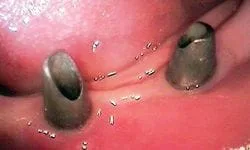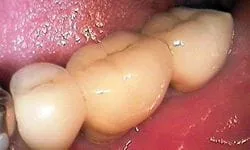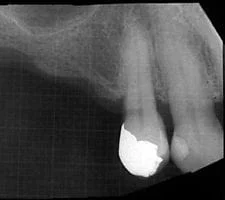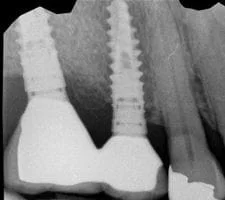There are many reasons a tooth can be missing – it may not have ever come in or it may have been extracted due to fracture, decay or periodontal disease. The condition of your other teeth and your jawbone impact our recommendations for the best way to replace it. If the adjacent teeth and jawbone are both healthy, either natural-tooth bridges or implants work well. Learn more about the pros & cons of implants, bridges & dentures from The New York Times. Here's what we think about:
CONDITION OF THE OTHER TEETH
If the teeth next to the space already have old crowns or large fillings, a conventional fixed bridge may make sense. Crowns are placed on the adjacent teeth and connected together with an artificial tooth (pontic). This is the fastest way to replace the tooth, does not require surgery, and it can provide crown protection to the supporting teeth. A dental implant would also work.
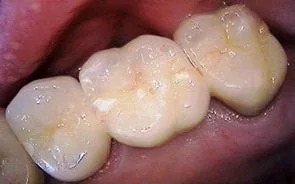
A Conventional Fixed Bridge uses Crowns on the Adjacent Teeth
If the adjacent teeth have small or no fillings, we think about a dental implant or a Maryland Bridge. Since the teeth don't need crowns, we try not to use a conventional fixed bridge. A dental implant is a replacement for the missing root of the tooth, which is later restored with a crown. A Maryland bridge is conservative bridge that is bonded to the outside of the adjacent teeth, so crowns are not needed.
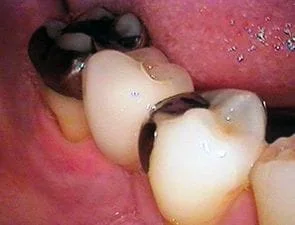
A Maryland Bridge Bonds to the Adjacent Teeth
CONDITION OF THE JAWBONE
When fractured or decayed teeth have been extracted recently, the underlying jawbone is usually healthy and full size. This provides good support for dental implants. However, the bone gradually shrinks when teeth are missing. So, if you are thinking about an implant, you'll have the best bone within six months of an extraction.
If there has been periodontal disease or infections, the bone is often diminished by the time teeth are lost. Bone can often be built up with a bone graft, if implants are desired.






